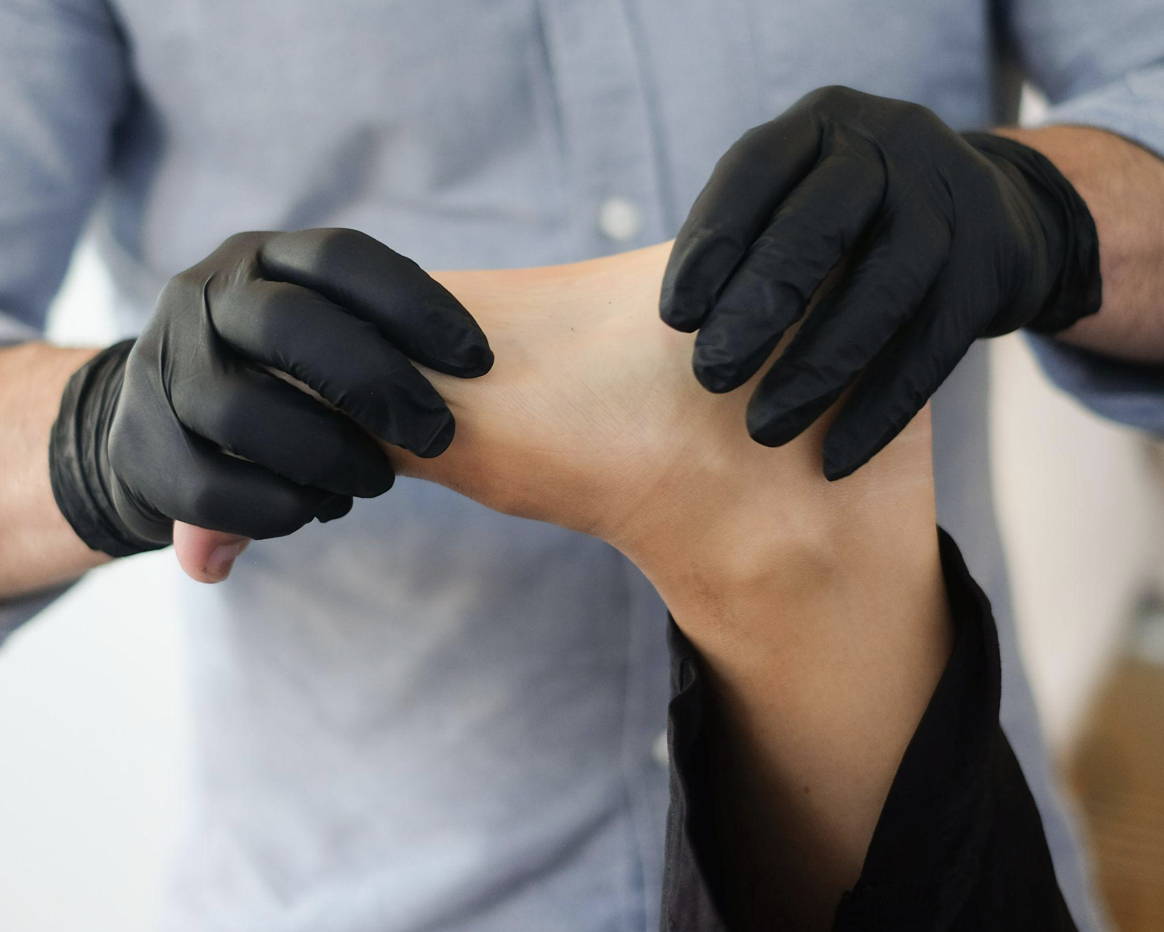Can physical therapy help chronic pain? Keep reading to learn how physical therapy works and if it's for you.

September 2022. This article is independently written by Shelby Golding. All opinions given are hers. Shelby has been certified as a personal trainer and nutritional specialist since 2007. In 2008, she found her passion for writing about these topics and hasn't looked back.

The opioid epidemic revealed how ill-equipped most medical professionals are in the face of pain. A pain reliever may address the symptoms, but it won't make the pain go away. So in the years following the rise in opioid addictions, many people have turned to alternative medicine to find some form of pain relief.
Physical therapy, chiropractic, acupuncture, herbalism — all of these alternatives uniquely influence pain. So keep reading to answer the question, "Can physical therapy help chronic pain?" as well as a few ways you can use it to find the root cause of your pain and start to heal.
What is Physical Therapy?
Physical therapy is a medical treatment focused on movement. Treatments vary from patient to patient, but most sessions focus on ease of motion, pain management, fixing movement dysfunctions, helping patients with limited mobility, or a mix of everything.
Often, doctors refer to physical therapy when a patient is recovering from surgery or dealing with chronic pain. So to the question, can physical therapy help chronic pain? The answer is a resounding YES!
Often, doctors refer to physical therapy when a patient is recovering from surgery or dealing with chronic pain. So to the question, can physical therapy help chronic pain? The answer is a resounding YES!
What to Expect During Treatment
Physical therapy, like most treatments, begins with an assessment. First, your therapist will ask about your pain and what you think might've caused it. Then, they'll assess your pain patterns, mobility patterns, range of motion, balance, endurance, posture, and muscle strengths and weaknesses. Finally, they'll ask questions about your lifestyle, including when you think pain is most prevalent and what activities make it better or worse.
In patients with chronic pain, a physical therapist will start by trying to relieve any pain or discomfort. They may use a combination of active physical exercises and more passive therapies so that you can begin moving normally as soon as possible.
After helping the patient to move without pain, the physical therapist will try to figure out what caused the pain in the first place. For example, it could be related to an injury, how you walk, your occupation (active or sedentary), or even mental/emotional trauma.
In the meantime, they'll give you exercises to strengthen muscles and joints, increase the range of motion in the injured areas of your body, and work to disrupt the pain patterns that are causing the pain to linger.
Why Physical Therapy is Unique
When the body's in pain, it naturally looks for ways to move that don't aggravate the affected area.
Picture someone with a broken foot. They will probably use crutches for the first few weeks to help them move around the house while the initial healing begins. But after their foot pain subsides, they may walk with a limp because of their boot's size or the weakness of the muscles on their injured side.
A physical therapist understands body mechanics and sees how the body compensates. They'll assess how you're moving and identify ways to strengthen the muscles that have become imbalanced since your pain began.
Picture someone with a broken foot. They will probably use crutches for the first few weeks to help them move around the house while the initial healing begins. But after their foot pain subsides, they may walk with a limp because of their boot's size or the weakness of the muscles on their injured side.
A physical therapist understands body mechanics and sees how the body compensates. They'll assess how you're moving and identify ways to strengthen the muscles that have become imbalanced since your pain began.
Disrupt Pain Patterns
Chronic pain is notoriously frustrating to address because of how the brain reacts to pain. Traumatic injuries may result in pain signals getting stuck in a pattern. While your brain does this to protect you, the resulting pain patterns might take months or even years to address.
While holding onto pain long after the injury has healed might seem like a contradictory way to protect you, the brain does it for a reason. Maybe the pain was the result of emotional or physical abuse. Since your body was in a fight-or-flight state, your brain perceived that pain as a greater threat than it was.
Disrupting the pain pattern might mean addressing severe psychological trauma, including depression, anxiety, PTSD, and other mental health issues.
Some physical therapists use Pain Neuroscience Education (PNE) to help patients change how they view their pain by using stories and metaphors to assist in reframing their pain experience. In addition, it helps calm down nerve hypersensitivity and reduces lingering stimuli outside the area of the injury.
A Mix of Active and Passive
Physical therapists use a combination of exercises and passive therapy to treat chronic pain.
Each person's treatment will differ depending on their unique pain patterns and movement ability. In most cases, the patient will need a combination of exercises to strengthen muscles and disrupt the pain patterns and passive therapy to decrease pain and improve mobility.
Exercises might include a mix of:
Each person's treatment will differ depending on their unique pain patterns and movement ability. In most cases, the patient will need a combination of exercises to strengthen muscles and disrupt the pain patterns and passive therapy to decrease pain and improve mobility.
Exercises might include a mix of:
- Low-impact aerobic exercise
- Strengthening exercises
- Targeted exercises
- Stretches for recovery

- Dry needling
- Heat and ice
- Massage
- Pain Neuroscience Education
- Ultrasound
- Laser therapy
The combination of active and passive treatments provides pain relief while creating new movement patterns. Progress might appear slow because your pain doesn't immediately disappear. However, you might need to prepare for the long haul to help with chronic pain.
Your treatment will start by reducing pain because whatever part of your body is reacting is experiencing extreme inflammation. It doesn't understand yet that the injury is no longer a threat. So you must first calm the inflammation before you even start addressing mobility, strength, and endurance.
After the pain is lessened, you can start introducing more intense strengthening and stretching exercises that will stop the pain and keep it from returning in the future.
After the pain is lessened, you can start introducing more intense strengthening and stretching exercises that will stop the pain and keep it from returning in the future.
Treating Pain with Physical Therapy
In answer to the question, "Can physical therapy help chronic pain?" the evidence might point to yes, but the effectiveness of your treatment will also depend on you. Healing is a journey, not a destination, especially regarding complicated issues like chronic pain. Be patient and listen to your body as you heal for the best results.
In the meantime, use your Kailo Pain Patch to ease chronic pain so that you can you live your life. Kailo is designed to relieve pain in seconds, a recent clinical study showed that a majority of patients stop using medication when using Kailo for pain relief.
Disclaimer: Kailo should not be used if you have a pacemaker or if you are pregnant. Always consult your doctor or health care professional before using Kailo.
In the meantime, use your Kailo Pain Patch to ease chronic pain so that you can you live your life. Kailo is designed to relieve pain in seconds, a recent clinical study showed that a majority of patients stop using medication when using Kailo for pain relief.
Disclaimer: Kailo should not be used if you have a pacemaker or if you are pregnant. Always consult your doctor or health care professional before using Kailo.






